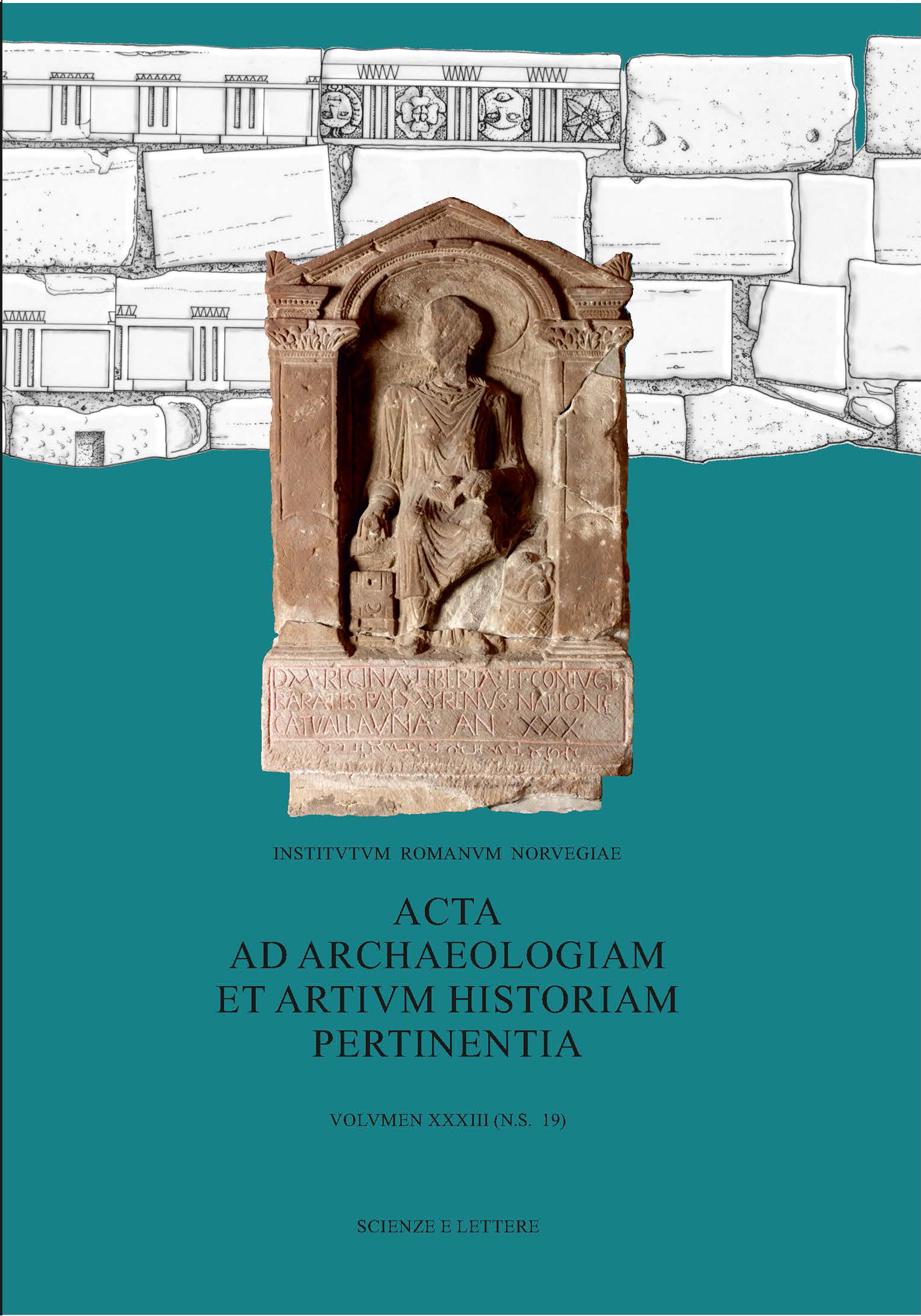Clusters of re-use: the late Roman Wall and the Unfinished Baths of Lepcis Magna
DOI:
https://doi.org/10.5617/acta.10431Keywords:
spolia, recycling, late-antique recycling, re-use, city walls, ancient baths, Antiquity, Leptis Magna (Extinct city), Lepcis MagnaAbstract
Lepcis Magna is a privileged site for investigating re-use in all its forms, and this paper focuses on the materials which are to be found recycled in two late-antique contexts: the late Roman defensive circuit and the so-called Unfinished Baths. In both contexts, the architects made use of a multitude of older elements, mostly architectural and epigraphic, many of which are still unpublished. These are discussed here for the first time in an attempt to investigate their character, their original provenance and in which ways they were employed within these new settings.
On cover:
Late Roman wall, the portion immediately south of the West Gate (Porta Oea) with re-used blocks from first-century mausolea (Drawing by Francesca Bigi) and Tombstone of Regina from South Shields (Arbeia) (Tyne and WearArchives and Museums/ Bridgeman Images).
E-ISSN (online version) 2611-3686
ISSN (print version) 0065-0900
Downloads
Published
How to Cite
Issue
Section
License
Copyright (c) 2023 Acta ad archaeologiam et artium historiam pertinentia

This work is licensed under a Creative Commons Attribution-NonCommercial 4.0 International License.

This work is licensed under a Creative Commons Attribution-NonCommercial 4.0 International License.
Authors who publish with this journal agree to the following terms:
- Authors retain copyright and grant the journal right of first publication with the work simultaneously licensed under a Creative Commons Attribution License that allows others to share the work with an acknowledgment of the work's authorship and initial publication in this journal.
- Authors are able to enter into separate, additional contractual arrangements for the non-exclusive distribution of the journal's published version of the work (e.g., post it to an institutional repository or publish it in a book), with an acknowledgement of its initial publication in this journal.
- Authors are permitted and encouraged to post their work online (e.g., in institutional repositories or on their website) prior to and during the submission process, as it can lead to productive exchanges, as well as earlier and greater citation of published work (See The Effect of Open Access).





